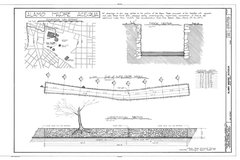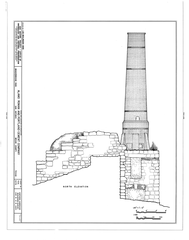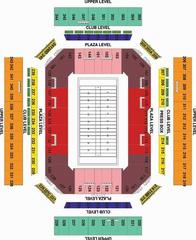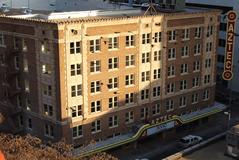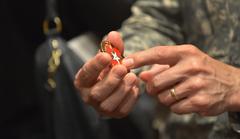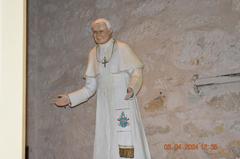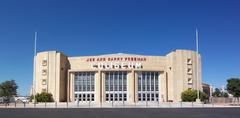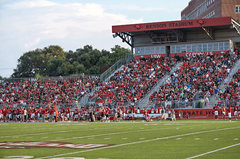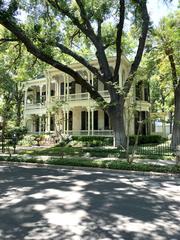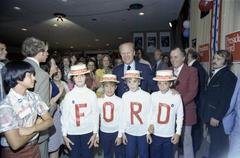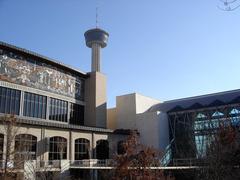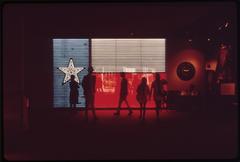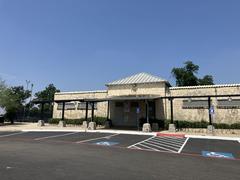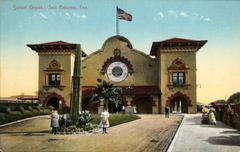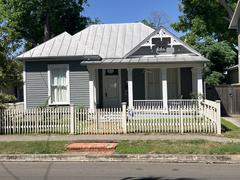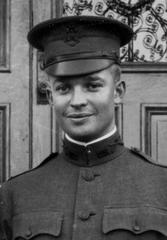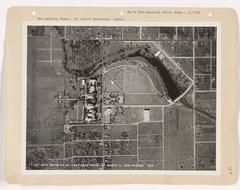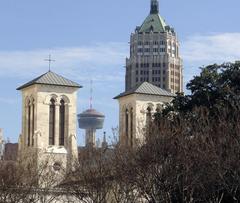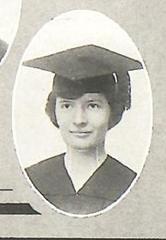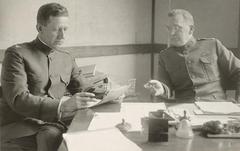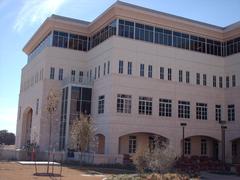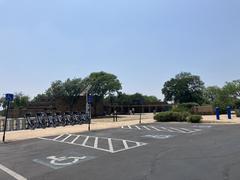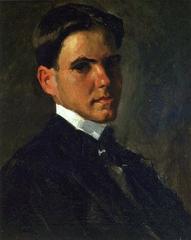Sartor House San Antonio: Visiting Hours, Tickets, and Historical Sites Guide
Date: 14/06/2025
Introduction: Sartor House in San Antonio—History and Visitor Appeal
Located in the heart of San Antonio’s renowned King William Historic District, the Sartor House is a distinguished testament to the city’s rich 19th-century heritage, architectural sophistication, and vibrant multicultural legacy. Built in the late 1800s, the home reflects the prosperity and aspirations of German immigrants who played a pivotal role in shaping the district’s unique character. Blending Victorian and Gothic Revival architecture with innovative local craftsmanship—such as stuccoed caliche blocks mimicking limestone—the Sartor House is an essential destination for history enthusiasts and architecture admirers alike (SA House Registry; King William Historical District Tour).
Today, while the Sartor House remains a private residence, it is featured in walking tours and special events that highlight San Antonio’s diverse heritage and thriving community. Preservation efforts by local organizations ensure the legacy of the Sartor House and the King William District endures, offering visitors a unique window into the city’s past (Centro San Antonio; King William Historic District - eosanantonio.com).
This guide provides comprehensive information on visiting hours, tickets, accessibility, and nearby attractions, helping you make the most of your experience at the Sartor House and within the broader King William Historic District.
Table of Contents
- Introduction
- Origins and Construction of Sartor House
- The Sartor Family and Their Legacy
- Architectural Significance
- Visitor Information: Hours, Tickets, and Tours
- Sartor House’s Role in the King William District
- Preservation and Modern-Day Relevance
- Historical Context: San Antonio in the 19th Century
- Sartor House Today
- Nearby Attractions
- Accessibility and Visitor Tips
- Special Events and Guided Tours
- Photographic Opportunities
- Frequently Asked Questions (FAQ)
- Conclusion
- References
Origins and Construction of Sartor House
The Sartor House occupies a prominent place within the King William Historic District, which was established in the mid-19th century by German immigrants and prominent local families. Completed in the late 1800s, the home reflects architectural styles favored by San Antonio’s elite, such as Italianate, Victorian, and Gothic Revival, with features including ornate detailing, symmetrical facades, and spacious verandahs (King William Historical District Tour).
The Sartor Family and Their Legacy
The house is named for the Sartor family, particularly Alexander Sartor Jr., a prominent jeweler and German immigrant. The Sartors were instrumental in the economic and cultural development of the district, embodying the success and aspirations of San Antonio’s 19th-century German community (King William Historical District Tour).
Architectural Significance
Designed by noted architect Alfred Giles around 1882, the Sartor House is a striking example of Victorian and Gothic Revival architecture in the region. Its illusionistic facade, constructed from stuccoed caliche blocks scored to resemble ashlar limestone, demonstrates the ingenuity of local craftsmen (SA House Registry; SAH Archipedia).
Key Features:
- Deep, shaded verandah with turned posts, decorative brackets, and a central pediment
- Five large, arched windows opening onto the verandah for enhanced natural light
- Dentil molding and pointed Gothic arches
- Ornate iron fence added in the 1970s, complementing the Victorian aesthetic
Image: Sartor House exterior with Victorian architectural details
Alt text: Exterior view of Sartor House with Victorian architectural elements in San Antonio.
Visitor Information: Hours, Tickets, and Tours
Visiting Hours
- Exterior Viewing: The Sartor House can be admired from the street year-round at any time.
- Interior Access: As a private residence, the interior is only open to the public during special events (e.g., King William Fair) or select guided tours.
Tickets
- Exterior Viewing: No ticket required to view from outside.
- Special Tours & Events: Tickets for interior tours during public events typically range from $10 to $25, depending on the event and provider.
Guided and Self-Guided Tours
- Guided Tours: Offered during select events and by local organizations. These provide in-depth historical and architectural insights.
- Self-Guided Tours: Explore the district at your own pace using walking tour apps, plaques, and brochures (GPSmyCity).
Accessibility
- District: Sidewalks and public spaces are generally accessible.
- Sartor House: Some limitations exist due to the historic structure; contact event organizers for specific accommodations.
Travel Tips
- Wear comfortable walking shoes
- Bring sun protection and water, especially in warmer months
- Check event schedules in advance to plan for interior access
Sartor House’s Role in the King William District
The Sartor House is a cornerstone of the King William Historic District, which is celebrated for its preservation of 19th-century architecture and urban design. The district’s inclusion on the National Register of Historic Places underscores its significance as a cultural and historical enclave within San Antonio (GPSmyCity).
Preservation and Modern-Day Relevance
Preservation organizations, such as the San Antonio Conservation Society and Centro San Antonio, have played a key role in maintaining the Sartor House and the broader district. Restoration efforts ensure that the district retains its historical character while fostering community engagement through educational programs, festivals, and cultural events (Happy to be Texas: San Antonio Historical Sites; Centro San Antonio).
Historical Context: San Antonio in the 19th Century
The King William District’s development coincided with San Antonio’s emergence as a commercial and cultural center after Texas’s independence and subsequent U.S. annexation. The district, named in honor of King Wilhelm I of Prussia, symbolized the success and influence of its German-American residents (eosanantonio.com).
Sartor House Today
Although primarily a private residence, the Sartor House remains a cherished landmark. Interior access is possible during special events, while its exterior continues to attract visitors year-round as part of walking tours and community festivities (GPSmyCity: Sartor House).
Nearby Attractions
- San Antonio River Walk: A scenic, pedestrian-friendly waterway lined with shops and restaurants (Nomadasaurus)
- Spanish Governor’s Palace: A preserved 18th-century adobe structure offering a look into colonial history
- The Alamo: Texas’s most famous historical site
- Blue Star Arts Complex: Galleries, studios, and eateries in a converted warehouse district
Accessibility and Visitor Tips
- Most sidewalks and public spaces in the district are accessible, but some historic homes have limited entry for wheelchairs.
- For the best experience, visit during spring or fall for pleasant weather.
- Parking can be limited during events; consider public transportation or rideshare options.
Special Events and Guided Tours
- King William Fair (April): The best opportunity for interior tours of the Sartor House and other historic homes.
- Seasonal Festivals and Art Walks: Check the King William Association and Centro San Antonio websites for schedules and ticketing (King William Association; Centro San Antonio).
Photographic Opportunities
The Sartor House and the surrounding district are ideal for photography, offering picturesque streetscapes, ornate architectural details, and lush gardens. The home’s facade is particularly photogenic during the golden hours of early morning and late afternoon.
Frequently Asked Questions (FAQ)
Q: Can I tour the inside of the Sartor House?
A: Interior tours are only available during special events or organized tours. The exterior can be admired year-round.
Q: What are the Sartor House’s visiting hours?
A: The house’s exterior is viewable at any time, but interior access is limited to specific events and tours.
Q: How do I get tickets for special tours?
A: Purchase tickets through the King William Association, Centro San Antonio, or event organizers’ official websites.
Q: Is the Sartor House wheelchair accessible?
A: The area is generally accessible, but the house itself has some limitations. Contact event organizers for details.
Q: Are photographs allowed?
A: Outdoor photography is permitted. Interior photography policies vary by event.
Q: Are there other attractions nearby?
A: Yes, the River Walk, the Alamo, and the Blue Star Arts Complex are all within easy reach.
Conclusion
Sartor House stands as a living testament to San Antonio’s architectural splendor and multicultural history. Through its preservation and ongoing role in community events, it offers visitors a unique perspective on the city’s evolution. Whether admiring its craftsmanship from the street or stepping inside during a special event, the Sartor House is a must-see for anyone interested in the rich tapestry of San Antonio’s past.
For up-to-date information on hours, tours, and events, consult local tourism resources or download the Audiala app for curated guides and insider tips. Don’t miss the chance to explore this historical gem and its vibrant neighborhood.
References
- King William Historical District Tour, GPSmyCity
- Happy to be Texas: San Antonio Historical Sites
- Sartor House San Antonio: Architectural Highlights and Visitor Information, SA House Registry
- SAH Archipedia
- King William Historic District - eosanantonio.com
- Nomadasaurus San Antonio Itinerary
- Centro San Antonio: Sartor House Historical King William Neighborhood
- Visit San Antonio
- King William Association

